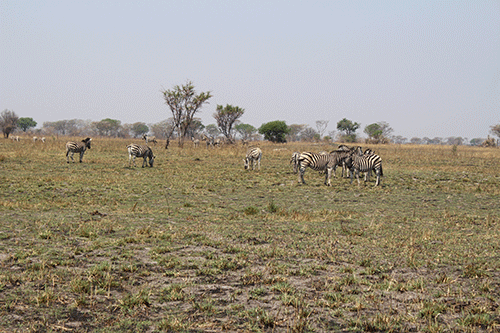Marythar Kambinda
KATIMA MULILO – The Ministry of Environment, Forestry and Tourism and stakeholders recently handed over N$37 million in project funding, equipment as well as grants to various conservancies in the Zambezi region.
The ceremony saw the launch of an extraordinary initiative—the Community Livelihood Development and Human- Wildlife Conflict Mitigation (CLD-HWCM) Project, vernacularly christened the “Lifolofolo ki Bupilo Project”, meaning “wildlife is life”.
Of the N$37 million, N$20 million is set for poverty-oriented support for community conservation, while N$17 million is directed towards community livelihood development and wildlife conflict management.
The two projects are co-financed by Germany and the Namibian government.
Line minister Pohamba Shifeta said human-wildlife conflict and community livelihoods are at the centre of community-based natural resources management programmes.
“This project being launched is part of measures funded by the Federal Republic of Germany through KfW through KAZA. This project is unique – with its focus securing the essential wildlife corridors within two Wildlife Dispersal Areas – the Kwando River and Zambezi-Chobe Floodplains Wildlife Dispersal Areas (KR-ZCFP WDAs), both parts of the iconic Kavango-Zambezi Transfrontier Conservation Area (KAZA TFCA),” he noted.
Shifeta said “the increase in the numbers of our wildlife, especially iconic species such as elephants, crocodiles, lions, hippos and rhinos are a success story for the country, but leads to increasing human-wildlife conflict incidences.”
Communities are resilient yet vulnerable, and find themselves in the crucible of survival, where each day is a delicate balance between sustaining livelihoods and mitigating the impacts of living close to the wild, he added.
As a measure, the ministry continues to implement livelihoods’ improvement initiatives in order to ensure communities do benefit from the abundant natural resources in their areas.
Shifeta stated that innovative strategies and interventions aimed at enhancing biodiversity conservation while elevating community livelihoods, such as improved conservation agriculture, value-addition of products, early warning systems, and the embracing of alternative livelihood initiatives will be allies in crafting a sustainable pathway.
German ambassador to Namibia Thorsten Hutter said the management of natural resources is and remains one of the three core pillars of bilateral cooperation between Namibia and the Federal Republic of Germany.
“Environmental protection and economic development do not exclude each other, as both are pre-conditions for one another to be successful,” he added.
Chairperson of the Zambezi Conservancy Chairpersons’ Forum, Jerome Lutibezi, said with the growing population and a need for increased fields for young people and climate problems in certain areas, there has been an increase in the number of incidents over the last few years.
“This year alone, we have reported six human deaths within the region associated with crocodiles and elephants, together with hippos. It is easy to blame the animals, but sadly, sometimes, as people have actually moved to resettle in elephant corridors in search of more land, we need to come together with all authorities to have holistic solutions to these challenges,” he reasoned.
Zambezi governor Lawrence Sampofu commended the governments of Namibia and Germany, and urged conservancies and community forests to practise the spirit of working against poverty, creating employment for the youth in villages, and uplifting the standards of living.
Six conservancies received new boats, while the Impalila conservancy received an engine replacement.
* Marythar Kambinda is an Information Officer at the Ministry of Information and Communication Technology in the Zambezi region.


